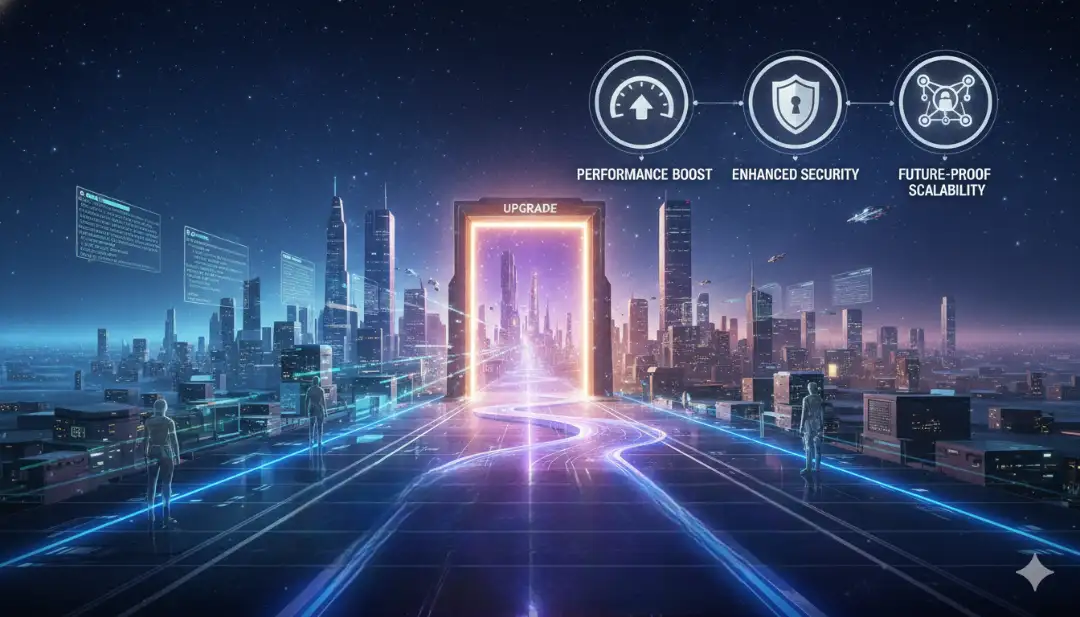Web Development Evolution: 15 Crucial Trends Changing the Face of the Industry in 2024
Published by: Abhinav K VDec 04, 2024Blog
In the ever-evolving landscape of web development, staying ahead of the curve is crucial for businesses looking to build successful and viable web solutions or enhance their existing online presence. The year 2024 brings forth a wave of innovative trends that promise to redefine the way we approach web development, offering new opportunities for engagement and growth. In this comprehensive blog, we will delve into the top 15 web development trends in 2024, exploring their significance and how they can be harnessed to create cutting-edge solutions and stay competitive in the market.
Edge Computing
As the first trend on our list, edge computing is emerging as a transformative force reshaping how applications are processed and experienced. With over 40% of respondents expecting industrial Internet of Things (IIoT) and operational technology (OT) functions to be prevalent in the next three years, edge computing promises faster processing and improved user experiences.
Zero Trust Architecture (ZTA)
In the realm of web security, Zero Trust Architecture (ZTA) is gaining prominence. Unlike traditional models relying on network trust, ZTA operates on the principle of "never trust, always verify." This approach is crucial as cyber threats become more sophisticated, making ZTA a transformative trend in ensuring robust security measures.
Internet of Things (IoT) and Internet of Behaviors (IoB)
The Internet of Things (IoT) has revolutionized connectivity by linking devices to the internet, enabling data exchange and usage in various aspects of life. Coupled with the Internet of Behaviors (IoB), which understands and influences human behavior, these trends promise personalized experiences and efficient engagement with users.
Single-Page Applications (SPA)
Despite not relying on new technologies, Single-Page Applications (SPAs) continue to be popular in web development. These JavaScript-based applications dynamically render content on a single page, providing a seamless browsing experience. Notable examples include Gmail, Google Drive, Facebook, and Twitter.
Motion UI
Web design takes center stage with Motion UI, a powerful front-end library that allows the creation of customizable animated UI elements. Enhancing user experiences by providing intuitive and responsive interfaces, Motion UI is crucial for retaining visitors and keeping them engaged.
Gamified Design
Gamification has become a powerful tool to drive user engagement, with studies showing that businesses using gamified loyalty programs attract 22% more customers. By incorporating game-like features, applications can offer virtual rewards, badges, and perks, creating a sense of exclusivity and encouraging loyalty. Cloud Computing: Embracing cloud computing, or a serverless architecture, allows web developers to leverage resources provided by cloud service providers. This eliminates the need for physical servers, enabling a focus on software and data development. The shift to cloud computing is becoming essential for a more efficient web development process.
Core Web Vitals
Google's Core Web Vitals set standards for enhancing website performance, responsiveness, and visual stability. With metrics like Largest Contentful Paint (LCP), First Input Delay (FID), and Cumulative Layout Shift (CLS), web developers can optimize user experiences for better interaction. Metaverse Integration: Metaverse integration involves incorporating virtual, augmented, or mixed reality elements into online platforms, creating immersive and interconnected digital experiences. While challenging to implement, this trend aims to seamlessly blend the physical and digital worlds for users.
Web Accessibility (WCAG)
Web accessibility, guided by the Web Content Accessibility Guidelines (WCAG), remains a crucial trend in 2024. Focusing on inclusivity, WCAG sets standards to make websites and digital content accessible to individuals with disabilities, catering to a diverse audience of approximately 1.3 billion people.
Content Personalization
Content personalization continues to be a significant trend, resonating with users by providing relevant content based on their preferences. Utilizing machine learning and artificial intelligence, web developers can analyze user actions to suggest products and services tailored to individual tastes.
Voice User Interface (VUI) Design
Voice search is rapidly emerging as a web development trend, with devices like Apple HomePod, Google Home, and Amazon Echo saturating the market. Optimizing content for voice search and implementing VUI design can enhance user experiences, making it a comfortable and convenient way for users to interact with web applications.
Augmented Reality (WebAR)
Augmented Reality (AR) takes center stage with WebAR, a novel technology that operates without the need for a dedicated mobile application. Users can access AR directly through their smartphone's native cameras and web browsers, transforming industries beyond gaming and utility apps.
Machine Learning (ML) Powered Software
Machine Learning (ML) continues to be indispensable in web development, leveraging algorithms for data analysis and learning. ML applications include image recognition, robust data analysis, contextual search algorithms, AI-driven recommendations, and automated customer service bots, enhancing user engagement and satisfaction.
AI-Powered Assistants and Chatbots
AI-powered assistants and chatbots are at the forefront of web development trends, enabling businesses to engage users and upgrade human interaction. Widely adopted in online marketplace development, these technologies enhance customer experience and streamline operations, with over 1.5 billion people using chatbots daily.
Conclusion
The landscape of web development is evolving at a rapid pace, and the trends highlighted in 2024 present exciting opportunities for businesses and developers alike. From the integration of emerging technologies like AR and AI to the emphasis on security with ZTA, staying informed and adopting these trends can propel web solutions to new heights. As we navigate the dynamic world of web development, embracing these 15 crucial trends will undoubtedly shape the future of the industry and contribute to creating exceptional online experiences for users worldwide.



 ColdFusion Development Tips fo....
ColdFusion Development Tips fo....
 Why Upgrade to Adobe ColdFusio....
Why Upgrade to Adobe ColdFusio....
 AI Prompting Tips That Improve....
AI Prompting Tips That Improve....
 Adobe ColdFusion 2025: Enginee....
Adobe ColdFusion 2025: Enginee....
 You Don’t Need Just Code, Yo....
You Don’t Need Just Code, Yo....



Your Trusted Software Development Company